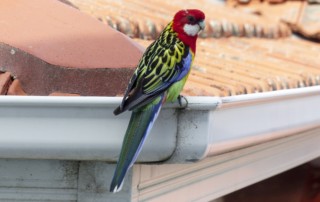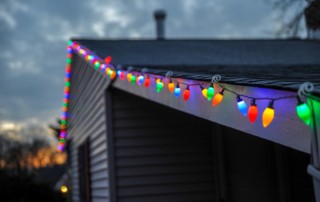The attic space between where you live and the roof exterior plays an important role.
In the Venice area, we work hard to keep our homes cool, and for most of the year this includes an air conditioner running basically 24/7. With so much effort, energy – and money – going into cooling our living space, we want to make sure that out insulation is doing its job. But if the attic area becomes overheated, it can become more difficult to keep the home cool, but it can also cause damaging mold and mildew growth. The answer to all these issues is to make attic ventilation a priority in your home.

Poor Attic Ventilation – The Issues
Most newer homes have adequate ventilation, bit some of the more traditional homes in the Sarasota, Venice and Englewood area probably were not built to current recommendations.
First let’s discuss what can happen if your roof does not have proper ventilation.
Excessive Heat: In our heat, the temperature in your attic can rise rapidly, and can even cause damage from underneath your roofing materials. Tiles and shingles are already being pummeled from UV rays from above, but if their underside is also overheated they can crack or curl – or the sealants can begin to deteriorate.
Mold Damage: All it takes is a tiny leak to allow moisture into your attic – and moisture and heat provide the perfect breeding ground for mold. Although most mold is not considered deadly, even a small amount of mold spores in your air vents can make your family sick. If anyone in your household is susceptible to breathing issues, the situation can get quite serious.
Ventilation Options & Solutions
There are several ways to structurally ensure that your attic space has adequate ventilation. The best way to determine which ventilation methods your home currently offers, and what can be added to augment your ventilation, is to call a local Venice roofing contractor to assess the situation. Here are several of the methods which you may utilize to keep the air circulating through your attic space.
Ridge Vent: A ridge vent is essentially a ventilation strip situated along the ridgeline of the house. Before installing the ridge vent, a thin strip of roof decking is removed along both sides of the ridgeline to permit air flow through the vent.
Soffit Vents: Any system of ventilation requires a point of entry and a point of exit for airflow. The soffit areas of the home should be inspected for the presence of soffit vents. The soffit vents permit convective air movement from the soffits of the residence to the ridge vent. Insulation baffles should be placed at the point where the attic floor meets the roofline to prevent the attic insulation from restricting airflow from the soffit vents.
Gable Vents: Located in the gable ends of the home, these louvered vents permit air to be pulled out of the attic space while preventing moisture from rainstorms from blowing back into the structure.
Attic Fans: Fans and vents may be installed to pull the air out of the attic space and send it to the exterior of the home. These fans are often controlled by a switch or a thermostat which identifies when excessive heat is building up in the attic space, and automatically begins to push the hot air out.
If you would like a current assessment of your roofing structure, or if you suspect that your attic space is getting too overheated, call [company_name] today. We can help you to create a roofing system which helps to make your home function more efficiently.



